Black widow – an expert in snake-catching
Have you ever seen a spider catching and eating a snake?
I haven’t, but in the places I’ve lived (Poland and the Netherlands) all spiders are harmless and seeing a snake is a rarity in and of itself. Only recently did I encounter an article describing all documented cases of spiders catching snakes and saw some proofs of that.
Content warning: this post includes photographs of snakes being eaten by spiders.
I bet you have seen at least one spider in your file. They are one of the most common and abundant predators on land. They often eat small insects and other arthropods (for example other spiders, centipedes or ticks). But there are also spiders whose diet includes earthworms, slugs and snails, plant material and also small vertebrates like birds, mice, bats, lizards, newts or even fish, and the focus of this article – snakes.
Where, how big and how many?
Snake-catching spiders have been documented 319 times, on all continents, except Antarctica. Most were recorded in north America, but Europe also had two cases.
Captured snakes are usually young and small, with an average total length of 26 cm. But snake-eating spiders are much smaller, usually less than 2 cm body length (so excluding the legs).

Among the recorded cases of spiders catching snakes not all the snakes actually died.
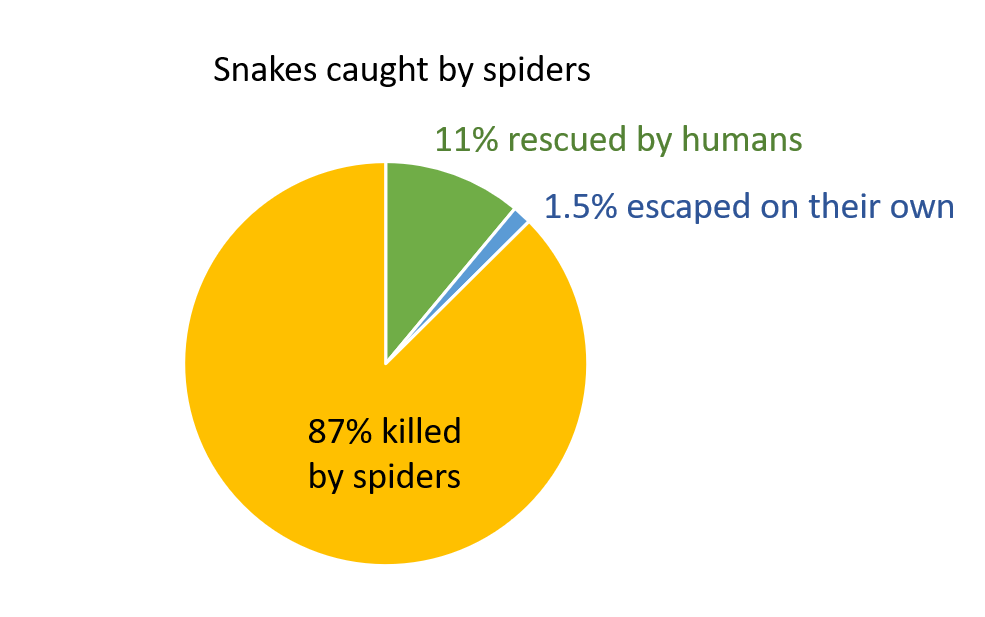
More than 30 spider species prey on snakes in natural conditions and an additional 11 ate snakes in lab or field experiments.
86 species of snakes were caught by spiders in the wild and another 5 in captivity or during staged field experiments.
Which spiders are the expert snake-catchers?
Cobweb spiders (theridiids family) are the uncontested experts in snake-catching. 60% of recorded cases involve them and more specifically in 50% of all cases widow spiders were the culprits. They are a widely distributed group with painful bites and sometimes dangerous to humans.
Cobweb spiders make strong, irregular webs. Additionally, they let long, strong, sticky fibres hang to the ground. When a snake sticks to the threads, the spider approaches, throws more sticky silk masses over its prey and bites it one or more times. Afterwards, the spider pulls the snake off the ground and eats it.
Widow spiders produce a very potent neurotoxin (a substance that affects the nervous system) that is very effective against vertebrates. It can take just a few minutes to paralyze a snake. Smaller spiders with less potent venom, and less venom in general, may need several days to kill their prey.
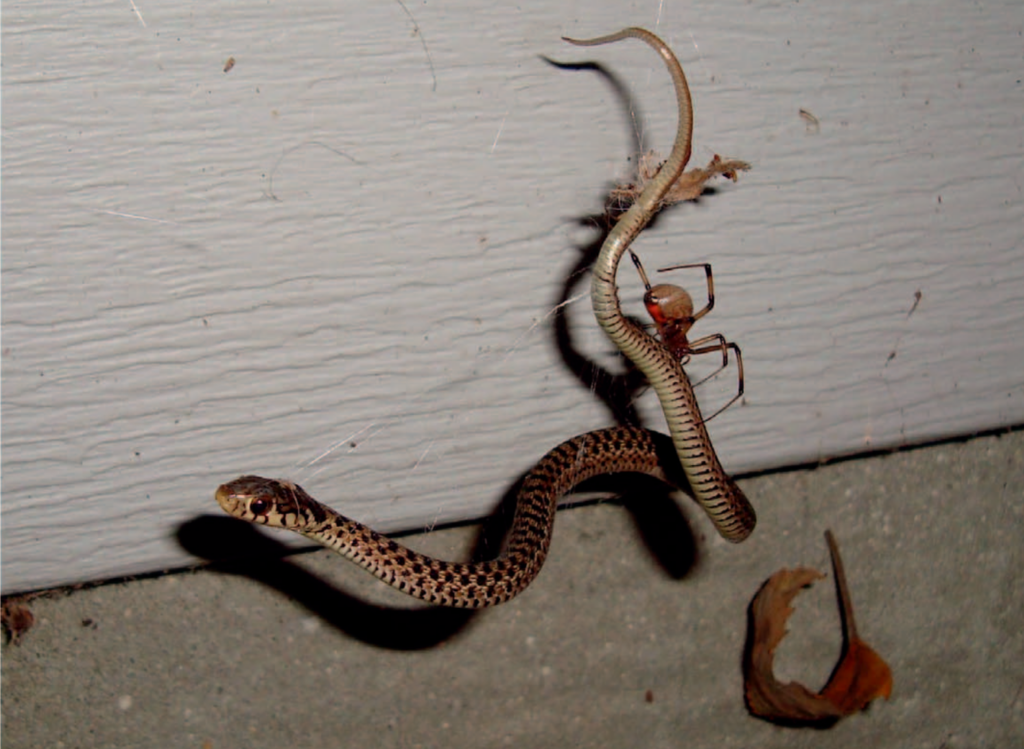
Tarantulas also get their share
A distant second place in snake-catching is for the tarantulas, with 10% of all cases. They don’t spin hunting webs but are active predators. They are also among the largest spiders with a leg-span of more than 20 cm.
Tarantulas have powerful mouth parts: “jaws” with fangs that are used to inject venom that contain an effective neurotoxin. Tarantulas can kill snakes longer than 0.5 meter.
One of the observers described an attack by tarantula in a following way “the spider tries to catch the snake by the head and will hold on in spite of all efforts of the snake to shake him off. After a minute or two the spider’s poison takes effect, and the snake becomes quiet. Beginning at the head, the spider crushes the snake with its chelicerae [mouth parts] and feeds upon its soft parts, sometimes taking 24 hours or more to suck the whole animal, leaving the remains in a shapeless mass.”
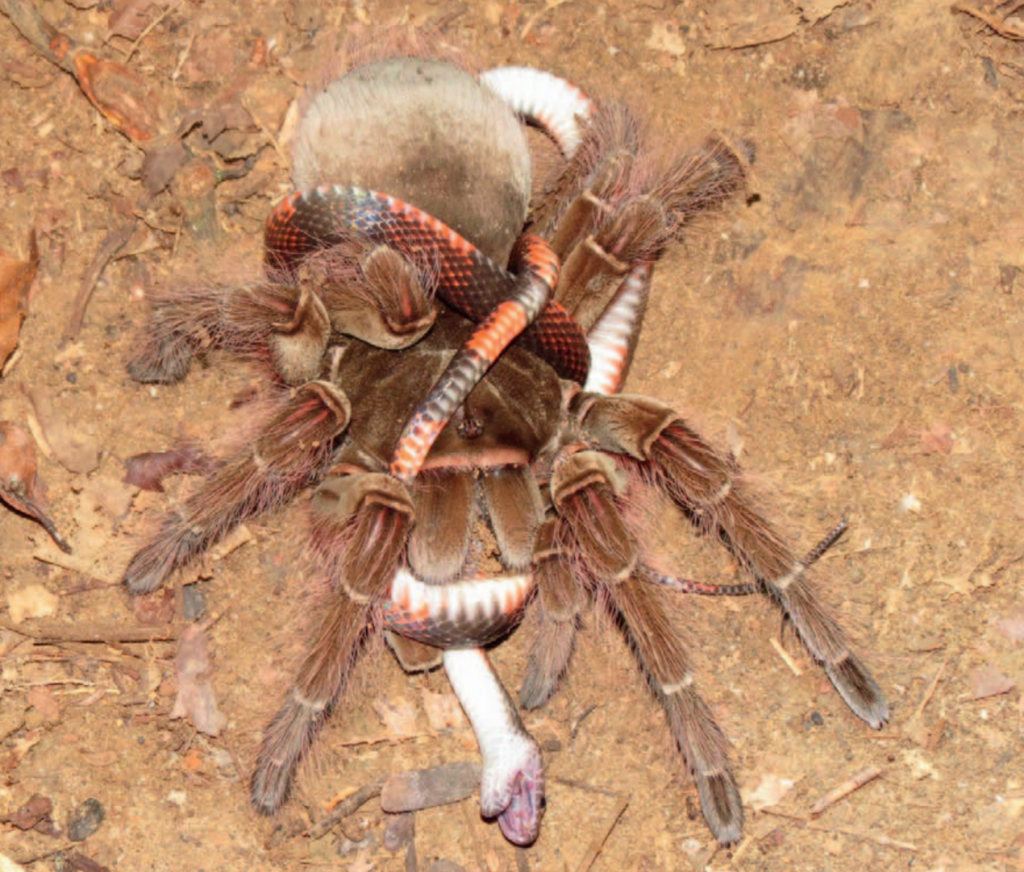
Different webs can also do the job
The third place in snake-catching belongs to the large orb-weavers (8.5% of all incidents). These spiders construct characteristic radial webs. They are very strong and sticky and tree snakes can get caught in them. Once the snake is entangled in the web, the spider wraps it tightly in silk, followed by one or two venomous bites.
Although not the most frequent snake-catchers, this group holds the record for the longest successfully caught snake on record: a 75 cm long adult green snake caught by a golden silk spider (see the last photo).
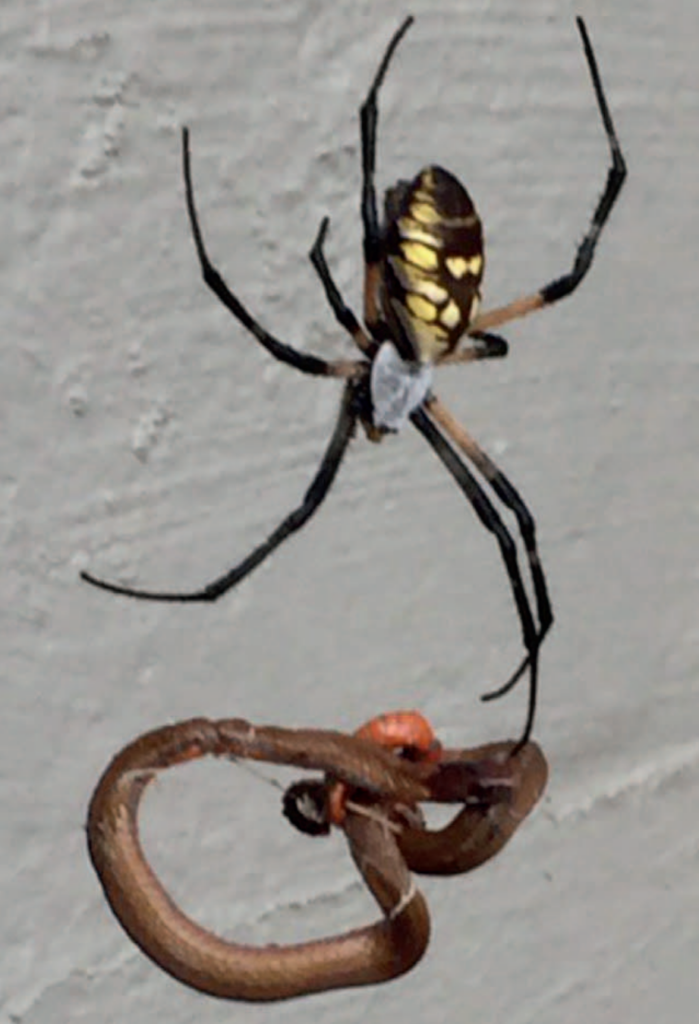
How common are (venomous) snakes in spiders’ diets?
For most spiders, snakes are probably a rare prey. But some tarantulas prefer snakes and frogs over insects. Colonies of redback spiders often seem to feed on reptiles. Snakes are big profitable prey. Smaller spiders can feed on one snake for several days. But spiders are likely not the main predator of snakes.
Interestingly, around 30% of snakes killed by spiders are considered venomous snakes that are potentially lethal to humans. But there are no documented cases of a snake using its venom on a spider. Many of the snakes in question feed mainly on vertebrates so it is likely that their toxin is not (very) harmful to spiders. But a spider might die if the snake punctures its body.
The tables can turn
Many snakes include spiders in their diet. These snakes are usually not venomous and rather small (25-30 cm) and tend to feed on small, defenceless spiders. Only in exceptional cases are large and/or highly toxic spiders eaten by snakes.
Sometimes rough green snakes approach large orb-webs to catch their inhabitants. But that’s a risky business, as they can get entangled in the web themselves and the predator becomes a prey.
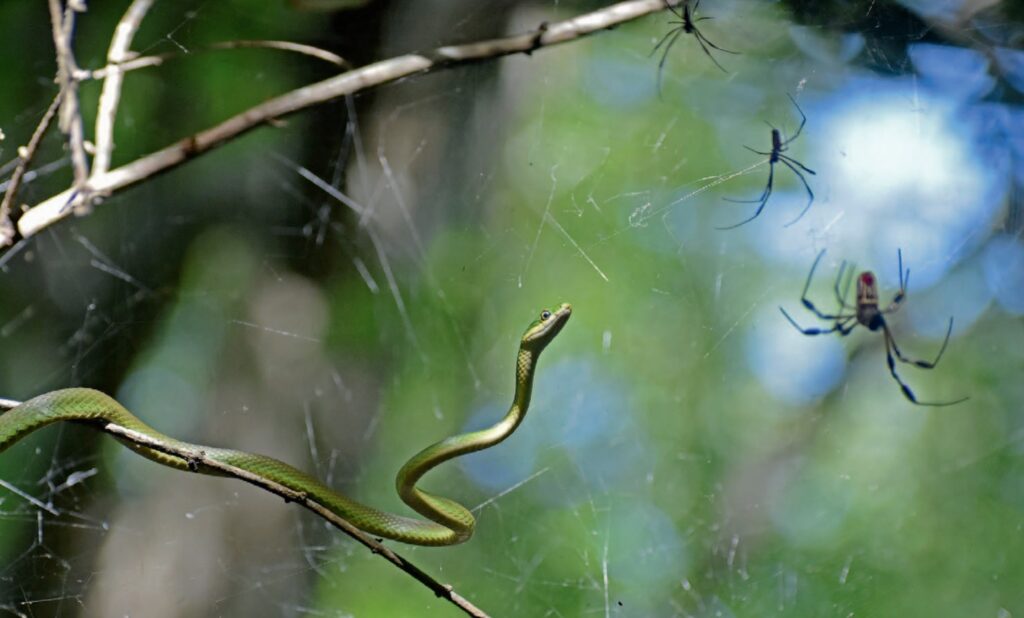
As is common in nature, size is not everything and the line between being a predator or a pray is not always sharp.
Polską wersję tego wpisu możesz znaleźć tutaj.
Black widow spider photo: Shenrich91 – Own work, CC BY-SA 3.0, https://commons.wikimedia.org/w/index.php?curid=15289705. All other photos from the orignial article.

